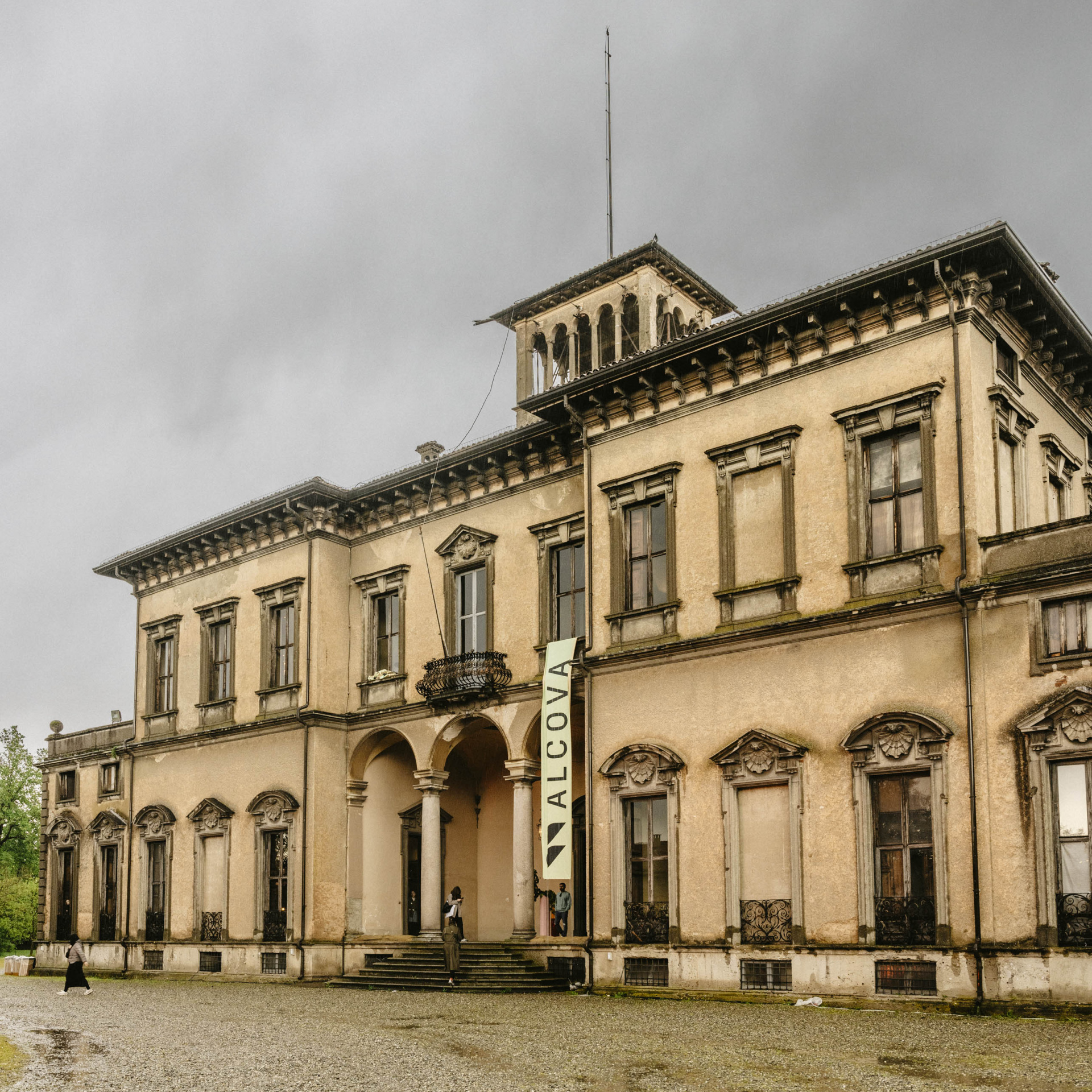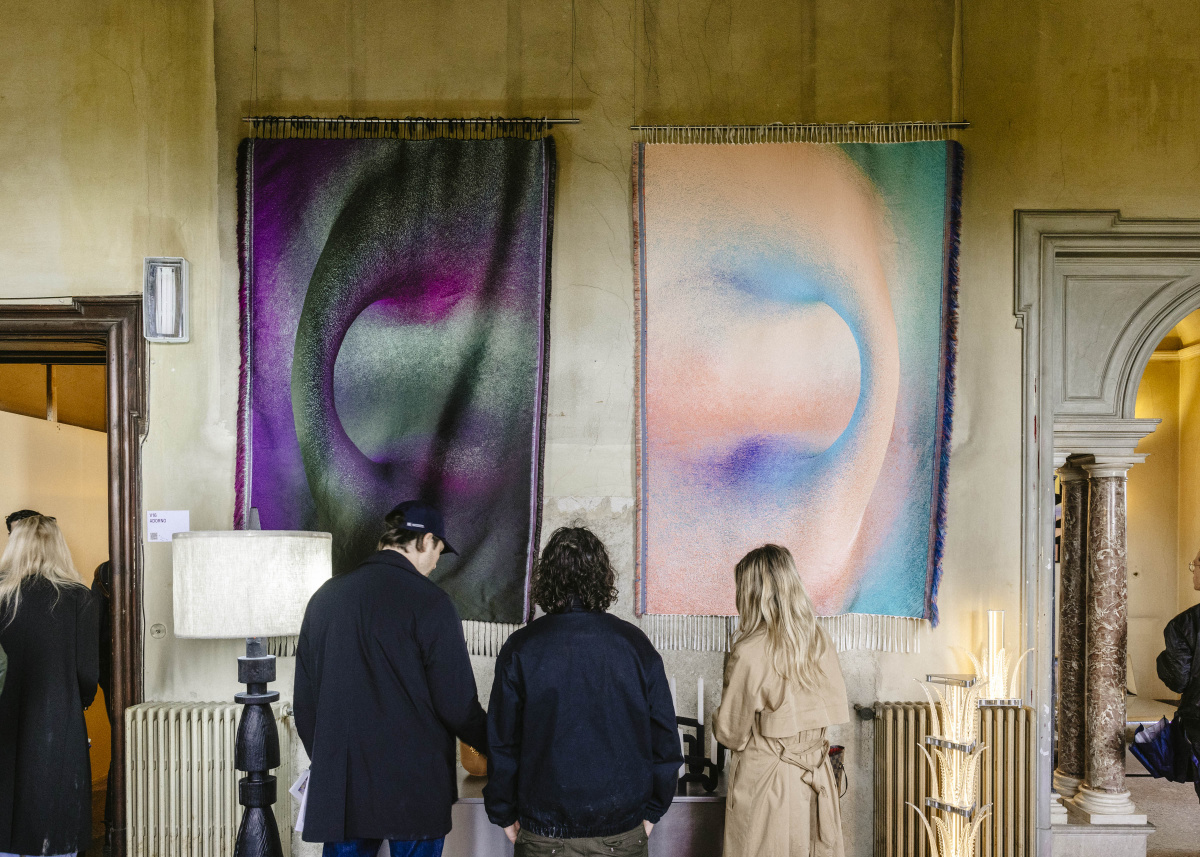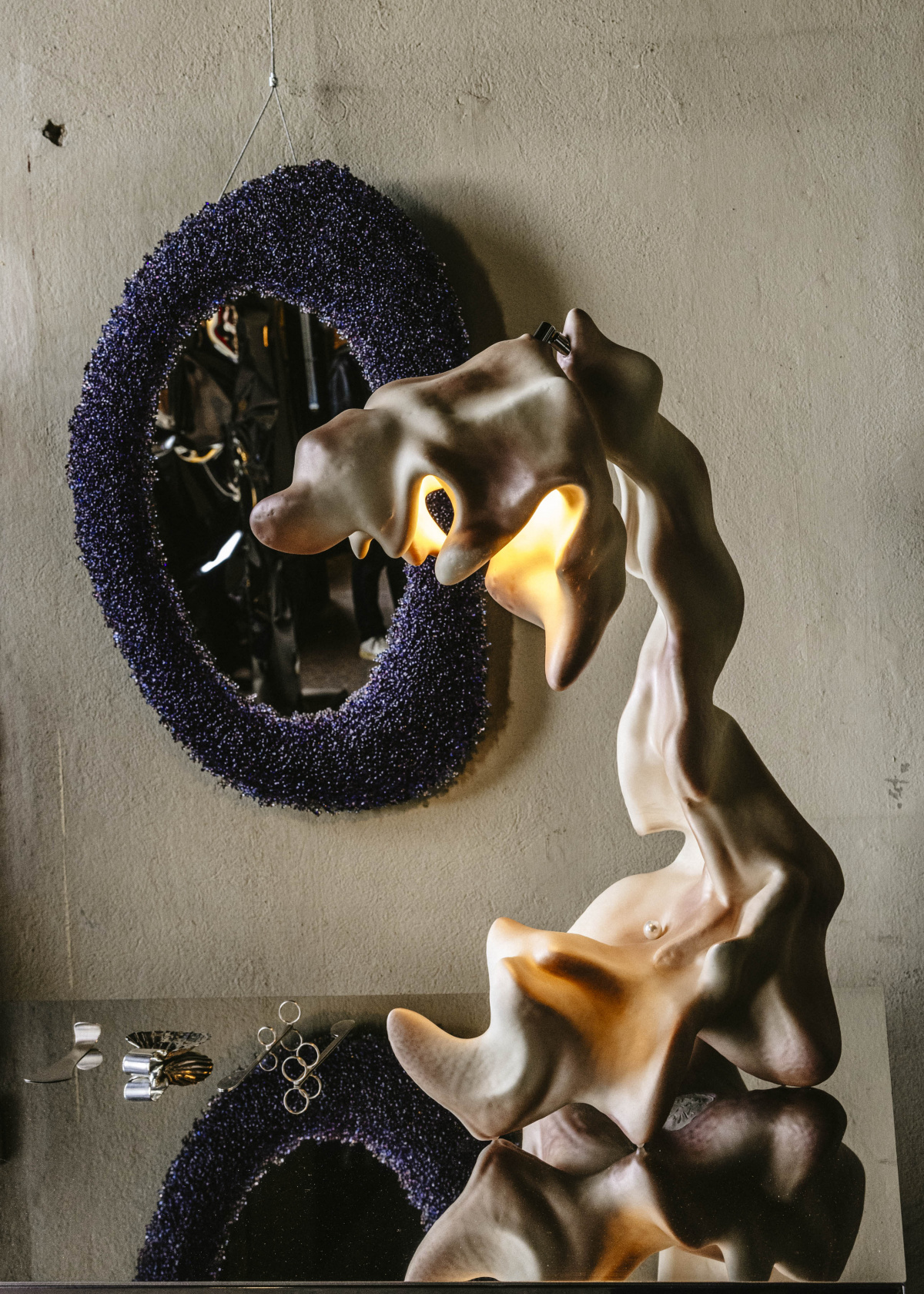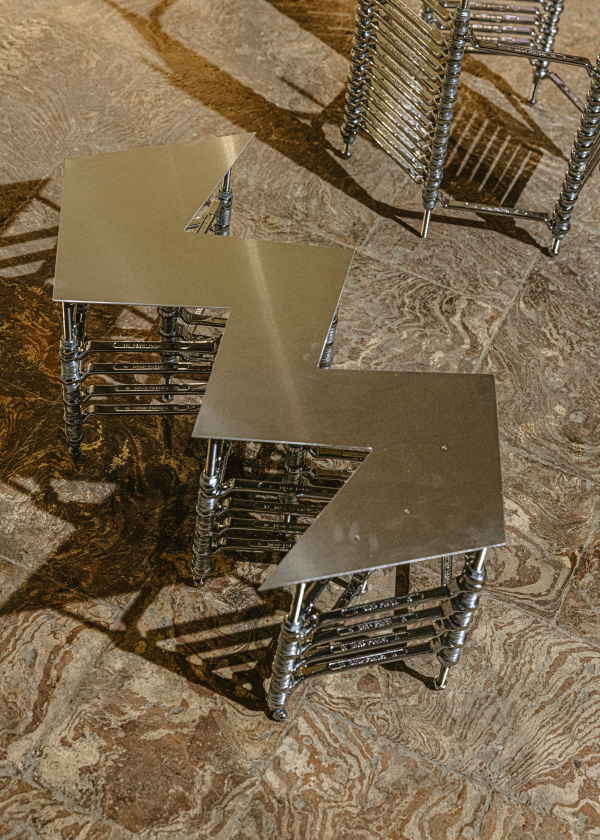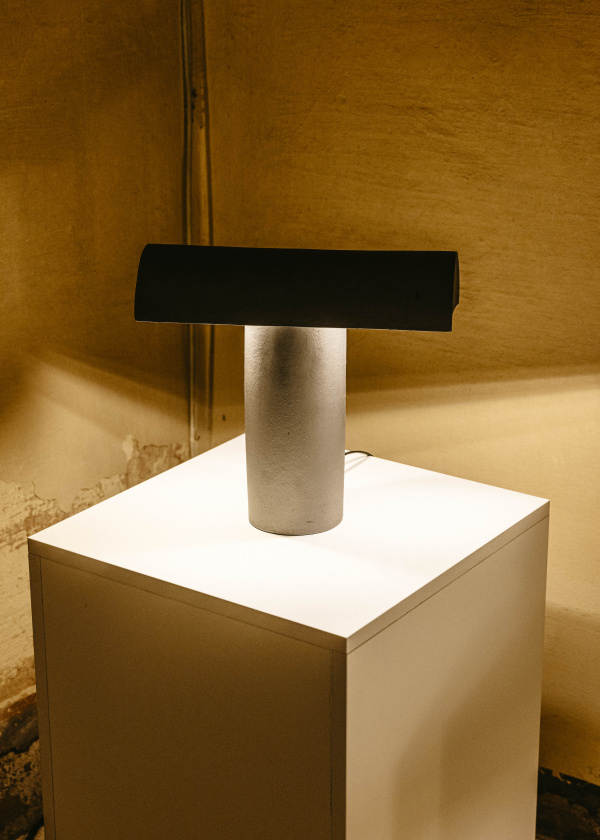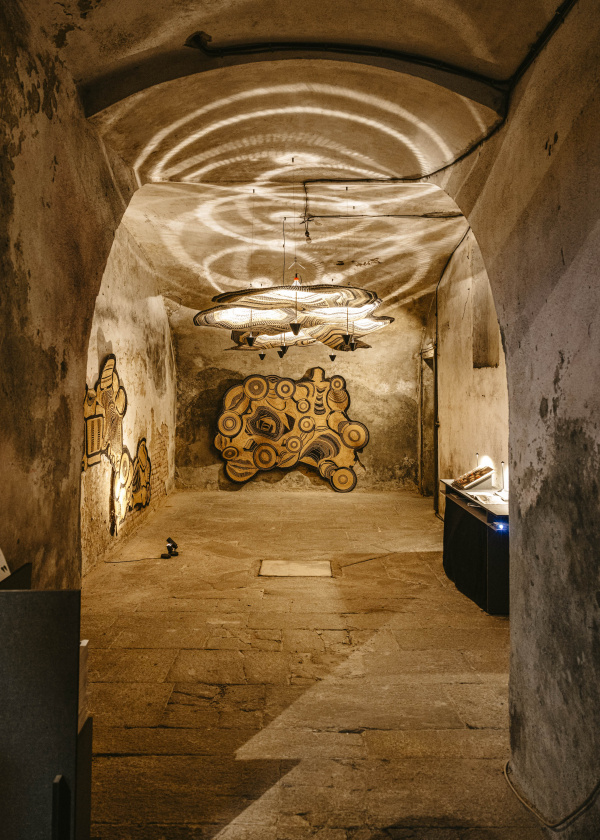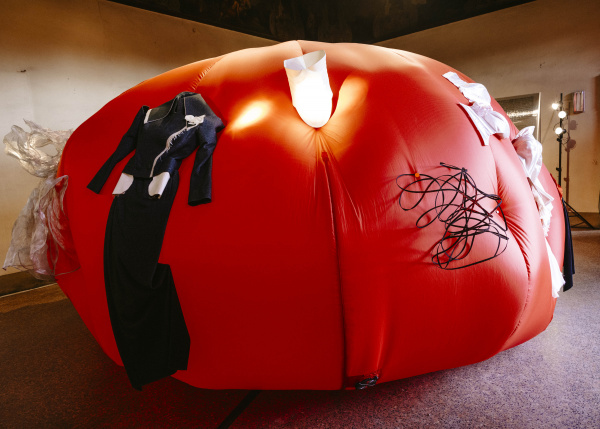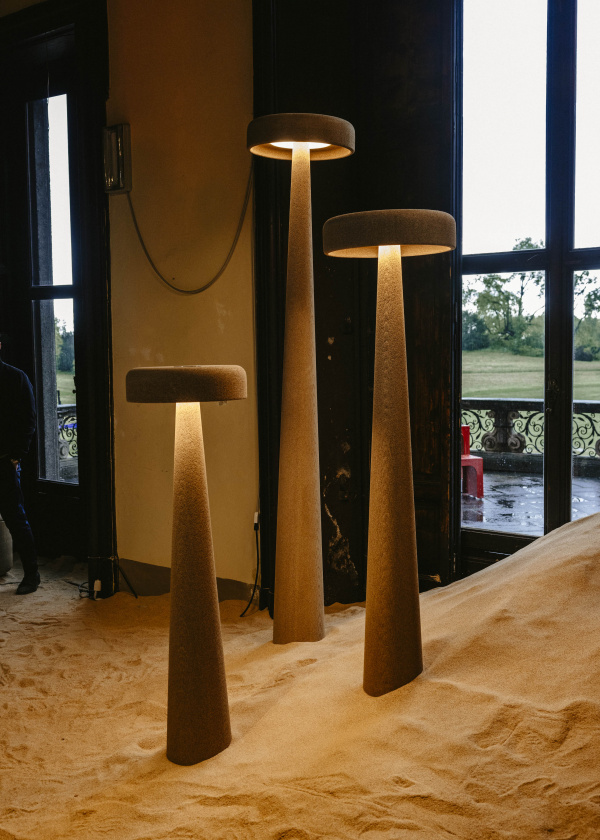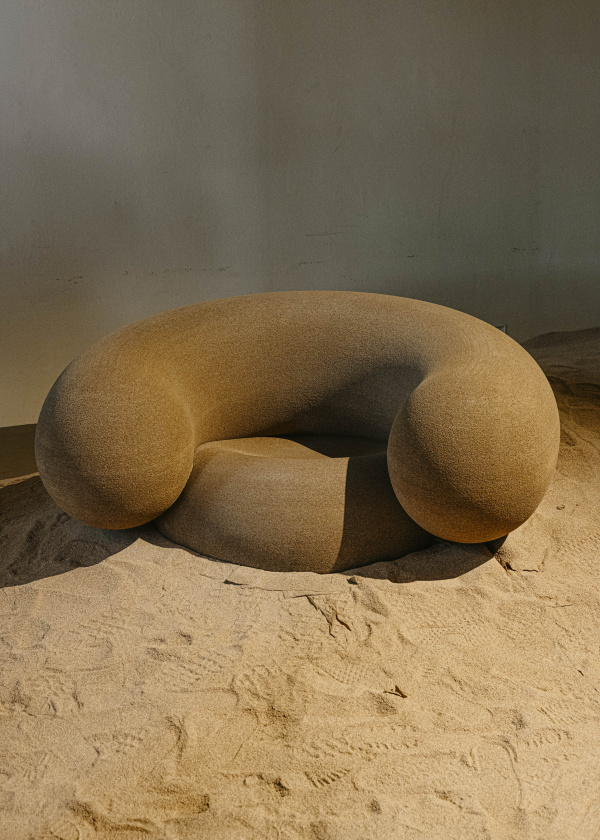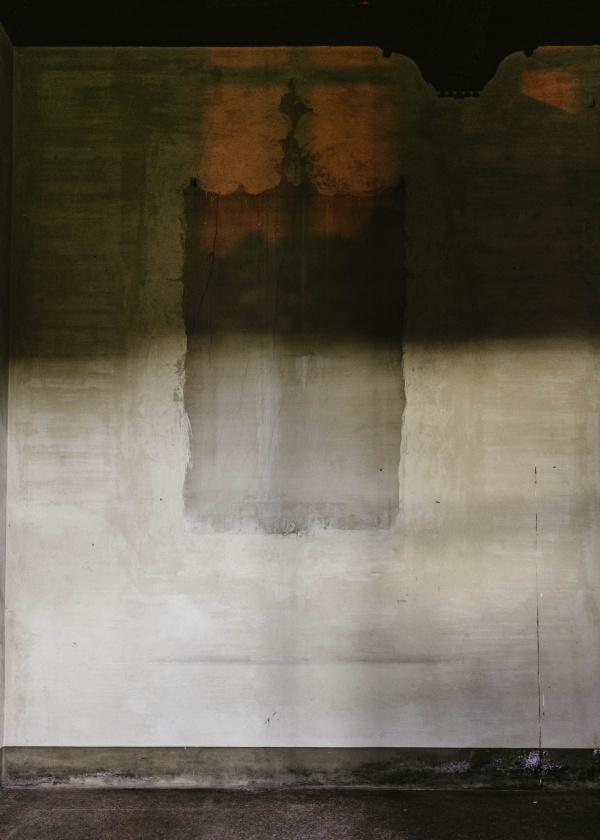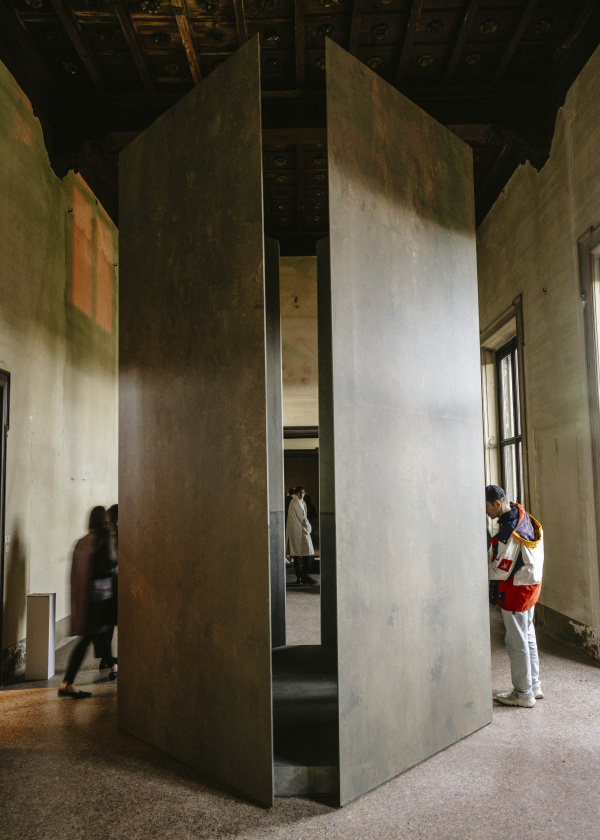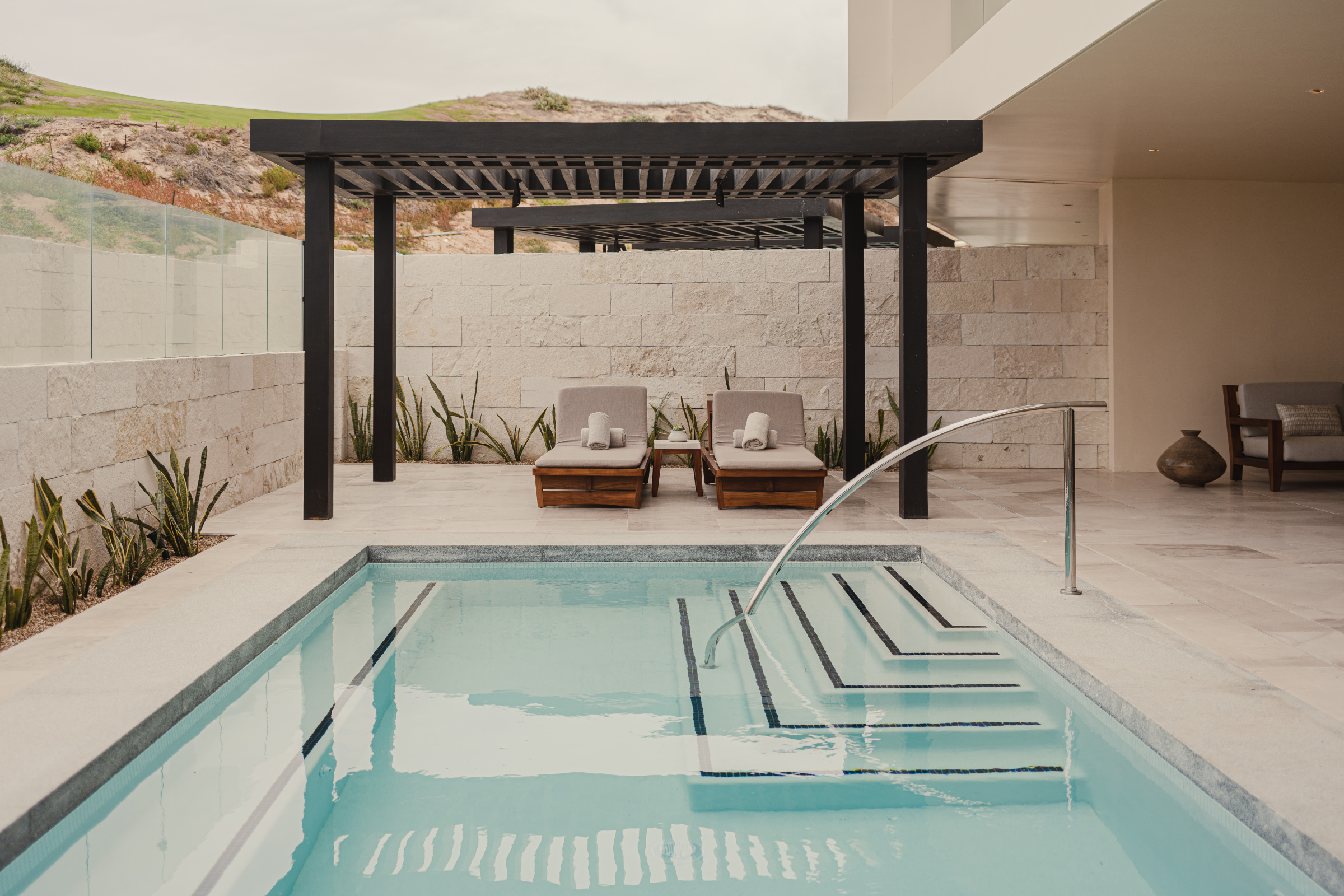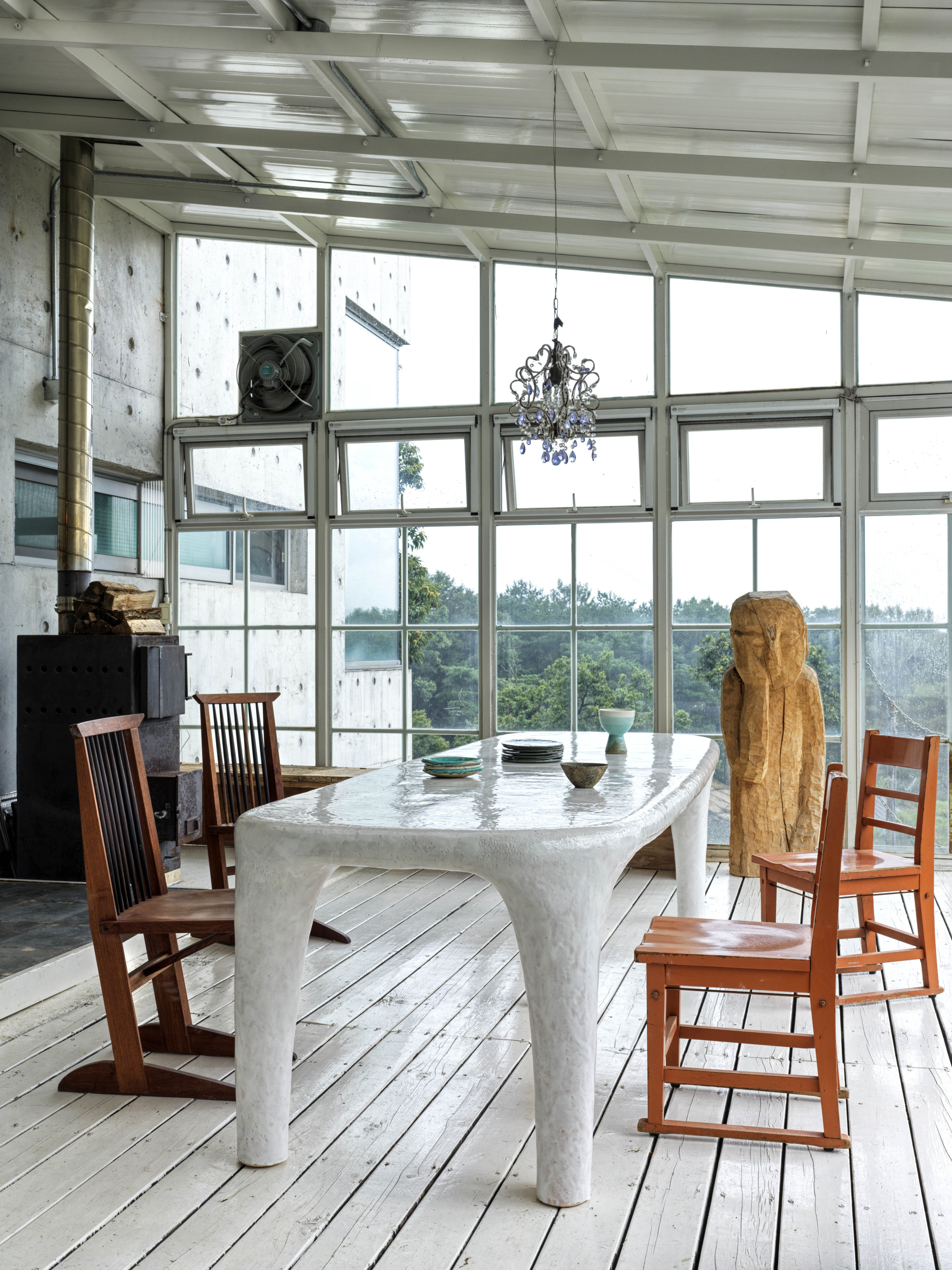Valentina Ciuffi is an Italian design curator and creative director known for her innovative approach to storytelling through design. As the founder of Studio Vedèt and cofounder of Alcova, she has collaborated with numerous prominent designers and institutions to create immersive and thought-provoking exhibitions. She recently presented the fourth edition of Alcova, a moving pop-up exhibition of emerging designers, at the historic Villa Bagatti Valsecchi and the Villa Borsani, just outside of Milan.
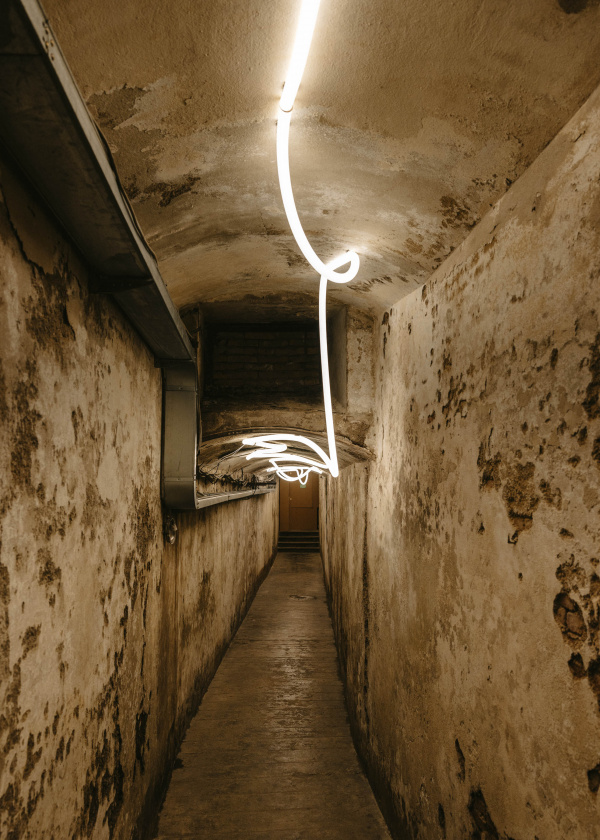
Lighting by Artemide, Alejandro Aravena, Bjarke Ingels, and Carlotta De Bevilacqua. “They left this light here,” says Valentina Ciuffi, founder of Studio Vedèt and cofounder of Alcova. “It was kind of them to say, ‘So long, we don’t need it.’ It will be for the visitors of the villa now. This collaboration with Artemide is very important. We are helping them with communication, social, and websites through Studio Vedèt. Bjarke Ingels is also a dear friend from many years ago when I was an editor. I had to spend one year following him around. In the end we became friends. Every edition he comes to Alcova. I think the corridor was designed for that lamp.”
Chris Force: I know that both you and Joseph Grima, your partner in Alcova, are magazine people with an editorial background. There’s something very magazine-like about Alcova; it feels like it’s been carefully edited. Of course, curation is part of it, but curation is different from editing, where you’re also thinking about pacing and the experience from start to finish. Has your magazine experience impacted your practice?
Valentina Ciuffi: I think it has. Even before opening Studio Vedèt, which is my other activity, and before Joseph opened his studio Space Caviar, being an editor for a magazine, and in his case, also the editor-in-chief—in my case, a journalist—it was incredible in getting to know people, developing a way to see things, question things, and be hyper-curious, which, as I always say, is my best characteristic.
- ANIMISM by Adorno. “Even though we have an online shop now, we loved the idea of having Adorno put together a show with different designers,” Valentina says.
- Tapestry by Lucas Gutierrez Studio; Opposite: Clams Season table lamp by Adir Yakobi
We present things in a way that is not just a curated exhibition. It’s an experience where we try to fit a certain piece in a certain space, like you’d fit a story into a certain number of pages with a layout. I have a graphic design studio, so I’m still doing books and editing. I still write. It’s a great comparison to say that Alcova is a beautifully written story that people enjoy, and in a very short time. Salone del Mobile is so quick in comparison—you have to do a lot. With Alcova we are able to keep people for roughly two hours. It’s still limited for the big spaces we have, but they come back with bright memories and strong images. So thank you. It’s an interesting comparison, and it’s true.
- Wrench table by Iyo Hasegawa
- “I loved the ceramic lamp that looked like metal,” Valentina says. “We kept saying the technique is very interesting.” Table lamp by Ryosuke Fukusada and Rui Pereira
- Frafra Tapestry and PET Lamp Gurunsi by Álvaro Catalán de Ocón. “Álvaro Catalán is a very serious researcher,” Valentina says. “He himself was at Alcova every day—not his guys. He has a big studio with 20 people, but he was there (with a coat, because it was cold). Everybody was amazed. This was one case where the room was perfect for the object.”
What was the process of choosing to work at this year’s venues, Villa Borsani and Villa Bagatti Valsecchi?
I’m good friends with the owner of the Villa Borsani. We’ve discussed doing something together for a few years, but the building is too small to host Alcova by itself. Later we found out that the Villa Bagatti was managed by a foundation that was interested in preserving and narrating the history of the villa instead of doing commercial events. When they realized Alcova was interested in going, they were very welcoming. Together with the two villas we created Alcova. In 2019 we used two buildings, too, so it’s not new for us. This year they were within walking distance. It was perfect.
- The WAKE Project, a collaboration between the Studio of Fashion and Footwear Design and the Studio of Product Design at the University of Art and Industry in Prague (UMPRUM). Dress by Hana Valtová
- “This one is about the role of formal dress codes in contemporary fashion,” Valentina says. “We love to have schools exhibit, even if they’re a little bit more speculative, and sometimes the design is not exactly what you’d expect from a design show. They are the future, so we make sure we have two of them.” Dress by Tomáš Višňovský
You and Joseph also have your own studios, which seem very busy and ambitious. How do you have time to do all these things at once?
We love what we do. The studios mix a lot of what we like to do—traveling and discovering architecture. Sometimes it’s a bit too much. Between the studios and Alcova we are 20 people, but it’s a very agile group. We grow right before the event, and it’s a family of very skilled people who can do more than one thing. When you have a good team like we do, you can concentrate on Alcova in certain moments and less in others. It’s very important for my survival to do that.
- Printed Nature by Harry Thaler
- “This is work by Harry Thaler,” Valentina says. “I had a client who could pay much more to be in this space since it’s the first room, but I loved the idea of the material Harry proposed. ‘We are going to make the best entrance ever,’ he said. Even against economy, Joseph and I decided to give them the room. I think it was worth it.”
I think the skills of the two studios are also very important in supporting Alcova. One does exhibition design, and the other does wayfinding and graphic design. It’s a lot of work, but we’re not managing a 100,000-person studio. Our life is pleas- ant somehow; we managed to not scale up brutally and work with people who are able to reinvent themselves and cover many roles. Joseph and I go a little beyond what’s normal. I’m a mom; my daughter is 2 years old, but we still manage. Many of our friends are architects who come to Alcova to chill. It is a family vibe.
- Monument by Colin King and Calico Wallpaper. Nuance and Perception collections by Calico Wallpaper
- “This is a miracle,” Valentina says. “They didn’t design the piece for the room (but they match nearly perfectly). Sometimes we say it’s a little bit of magic. We put in a lot of effort, so we are paid back by little things like this.”
A version of this article originally appeared in Sixtysix Issue 12. Subscribe today
